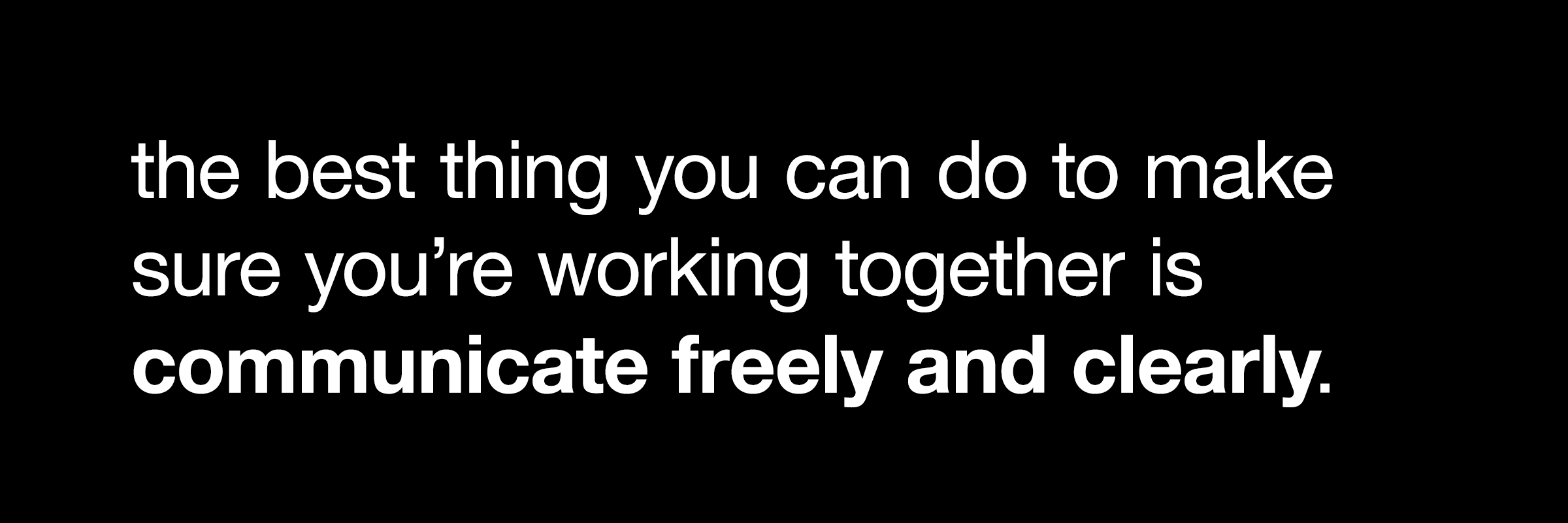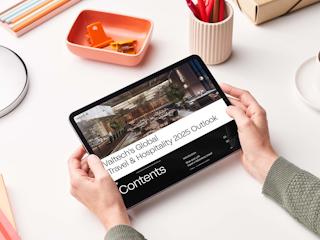At Valtech, we work in teams for every project. As a global company, often our teams are comprised of people from all around the world. It has required us to put best practices for effective collaboration at the forefront of everything we do. Follow our tips for successful collaboration to revolutionise your team projects.
1) Know Your Team
Any great collaboration begins before the work even gets started. Preplanning is essential not only to getting the best possible team, but also for understanding the project in question. Afterall, if you don’t know what you’re attempting to accomplish, building the best team is practically impossible.
Whether you’re building the ideal team to tackle a project, or you find yourself with a group of people pulled together at random, knowing your team is the first step in any successful collaboration. This means knowing each person’s individual strengths to better understand how those strengths can be incorporated into the team.
However, knowing your team also means knowing about any potential growth areas for everyone. Acknowledging where everyone on the team is capable of learning and growing over the course of the project will help to create a plan for any speedbumps that might arise within the collaboration before they happen. Through this process, you’ll be able to find the unique value of your team. It’s all about knowing individual strengths (and weaknesses) and finding how those individual attributes can combine on your team to make something new.
2) Be Organized
Like knowing your team, being organized is also an important part of collaboration that starts in the earliest moments of a project. The need to be organized might seem like an obvious thing, but being organized can mean different things in different situations.
Being well organized for a collaboration starts with acknowledging the tools and platforms to be used during the project. Whether you’re working on a global team or everyone is in the same location, the preferred method of team communication has to be established, as well as the best way to communicate about the project with the client when the time comes to do that.
 Being organized also incorporates knowing what the new rituals for your collaboration will be. Will you be meeting weekly, or at multiple points during the week? Who will be leading the meetings, and who does the team answer to? A new collaboration will lead to new ways of working together, and everyone needs to be aligned.
Being organized also incorporates knowing what the new rituals for your collaboration will be. Will you be meeting weekly, or at multiple points during the week? Who will be leading the meetings, and who does the team answer to? A new collaboration will lead to new ways of working together, and everyone needs to be aligned.
While actual work on the project is being completed, regular check-ins to ensure no one on the team is being overworked and to keep track of the overall timeline for the project are very important.
3) Work Together as a Team
One common problem with collaborating on a project is the feeling that everyone is simply in their own corner doing their own thing instead of actively working together. This, of course, defeats the purpose of working collaboratively.
 Working together as a team requires making sure the entire team is aligned on unifying goals. While the overall goal is of course to deliver the project to the client on time and under budget, that isn’t the only goal possible. Making weekly goals for the entire team to work together towards meeting is one option.
Working together as a team requires making sure the entire team is aligned on unifying goals. While the overall goal is of course to deliver the project to the client on time and under budget, that isn’t the only goal possible. Making weekly goals for the entire team to work together towards meeting is one option.
However, the best thing you can do to make sure you’re working together is communicate freely and clearly. Through whatever means the team has agreed on, clear communication is crucial for success. This extends to progress reports and status updates, but also includes other questions and uncertainties about the project. Remember, every individual has a role to play and important responsibilities in the team’s success.
One aspect of communication that is often overlooked and can cause friction on any collaboration is the fact that different people communicate in different ways. This is something that is often overlooked or forgotten in particular when collaborating with people from different cultural backgrounds.
4) Be Understanding and Sensitive to Different Cultures
As a global company with employees all around the world and clients from all over as well, we’ve spent a lot of time learning how to navigate certain differences. Even if your team for any given project isn’t stationed all around the world, the need to appreciate cultural differences when working together is inescapable. It’s important to remember that everyone on the team has a different background and different experiences which all colour the way they communicate.
Navigating cultural differences starts with listening before speaking. And it includes asking a lot of questions. Learning about cultural barriers is something that can be done during the getting to know the team phase. But in order for it to be effective, everyone has to be willing to talk about cultural differences and to listen and heed what each other is saying.
 Looking and listening in these situations is often more important than speaking. So, remember to actively listen and absorb what each member of the team has to say about their communication style and culture, and ask a lot of questions to make sure you’re understanding properly. Try to remember that any clear communication that comes from this process in the long run will be more appreciated than any potential annoyance at being asked a lot of questions for clarification’s sake.
Looking and listening in these situations is often more important than speaking. So, remember to actively listen and absorb what each member of the team has to say about their communication style and culture, and ask a lot of questions to make sure you’re understanding properly. Try to remember that any clear communication that comes from this process in the long run will be more appreciated than any potential annoyance at being asked a lot of questions for clarification’s sake.
5) Be Clear About Who Does What
Along with clear communication, a successful collaboration requires clear expectations about who does what. A problem that sinks a lot of collaborations is working off of the assumption that everyone knows their role and their requirements. Instead of assuming and hoping for the best, use the communication skills at work in the previous steps of the process to make certain everyone on the team knows what’s expected of them.
Part of this process is to identify functional leads on the team who can be accountable for quality. Having a fully egalitarian team in which every person’s ideas and plans are treated as equal is a great way to maximize your team’s potential, but that doesn’t eliminate the need for someone to be in charge of certain aspects of the project. Quality control is one of those aspects that benefits from direct leadership.
Make sure everyone understands their role and responsibilities on the team, and make sure they all know who to turn to with questions or concerns, and that they know who will be checking their work for quality issues.
6) Know What You Are Accomplishing
Being clear about what everyone is doing is the micro-view of the project. It’s about making sure everyone understands what small steps need to be taken to build up to the bigger whole. Knowing what the team is accomplishing entails taking the macro-view of the project. It’s about making sure everyone is constantly aligned on what each individual piece of the project will add up to when completed.
Make sure the project, scope, timeline and all possible complications are clear to the team. It might seem like this is something to be done at the beginning of the collaboration process, but in reality, it’s an ongoing conversation that needs to be had at regular intervals on the team. This will cover any changes that may occur while the project is being worked on as well as any complications that arise that were not foreseen during the preplanning stages of the project.
Being aligned on what’s being accomplished also gives your team the ability to make sure that the scope and timeline of the project continues to align with the client’s goals and expectations every step of the way. If there’s something that isn’t aligning properly, you’ll need to make changes quickly to get back on track.
7) Be Disciplined
Like any system, or set of tips, these will all work so long as everyone is dedicated to making sure they work. Along those lines, it’s important to remain disciplined and make use of best practices consistently during any project.
 Even if everyone has been making use of the best practices during the entire process of working together, that shouldn’t be taken to mean that you can relax and forget a step or two in the next meeting. You shouldn’t allow your team to get into the habit of skipping regular update meetings or falling out of practice with any one of the tips listed here. Making these habits second nature requires consistency.
Even if everyone has been making use of the best practices during the entire process of working together, that shouldn’t be taken to mean that you can relax and forget a step or two in the next meeting. You shouldn’t allow your team to get into the habit of skipping regular update meetings or falling out of practice with any one of the tips listed here. Making these habits second nature requires consistency.
8) Be Agile
All of the previous tips for successful collaboration are important and useful, but they’re nothing without this one. No team can plan for every complication their project is likely to hit. It’s simply not possible to foresee every single aspect of a project. Being agile and able to adapt your team’s way of working when an unforeseen problem arises is crucial.
Perform retrospectives regularly and adapt your way of working. During these times, make sure that you aren’t putting off having necessary, but difficult, conversations. That can hold up the timeline more than needed. Instead, have those conversations when the subject is most pertinent, and make sure to keep everyone aligned on tools, methodologies, and any changes to the goals and overall plan.
 Having a game plan for the project is important but being able to adjust it when things don’t go according to the plan is crucial for success.
Having a game plan for the project is important but being able to adjust it when things don’t go according to the plan is crucial for success.
Continue to practice clear communication, and continue to organize meetings in the same way throughout the entirety of your collaboration and you’ll see the kind of results your clients will rave over. Whether your team collaborates in person or virtually, follow these tips and you’ll forever change how well they work together.











